A wave-powered water desalinator, drones that plant mangroves and mobile greenhouses made our list of promising prototypes to watch this year.
We dipped into pools of finalists in design competitions that we hosted and supported in 2021 to make this list, including the Innovation Showcase, hosted by our umbrella organization the American Society of Mechanical Engineers (ASME ISHOW). We also polled our network of design and engineering experts for recommendations. The prototypes here are in development or have undergone a recent upgrade. These are the promising prototypes to watch in 2022.
AfriVent: a Kenyan startup’s ventilator
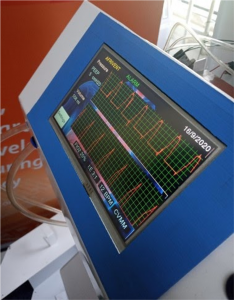 In early 2020, the mechanical engineer Wambui Nyabero joined a team at a technology park and makerspace called GearBox in Nairobi, Kenya, to support the development of a ventilator design that could be manufactured locally. Ms. Nyabero helped develop a prototype for Kenya just when Covid-19 was descending on the continent. However, Africa was spared of the worst effects of the early pandemic, and the ventilator idea was shelved.
In early 2020, the mechanical engineer Wambui Nyabero joined a team at a technology park and makerspace called GearBox in Nairobi, Kenya, to support the development of a ventilator design that could be manufactured locally. Ms. Nyabero helped develop a prototype for Kenya just when Covid-19 was descending on the continent. However, Africa was spared of the worst effects of the early pandemic, and the ventilator idea was shelved.
“Some of us felt there was something that would still come out of this drive,” Ms. Nyabero says.
This sense of unfinished business led her to join a team of five who were pushing on with the idea. Thus far, the team has built a functional prototype that meets medical device standards in Kenya. The team’s AfriVent prototype won ASME ISHOW 2021 in Kenya and is now undergoing upgrade.
Though the AfriVent design works as well as medical ventilators imported from economically developed countries, the new design may have the advantage that it can be deployed in remote areas, Ms. Nyabero says. AfriVent can combine with accessory devices such as a pulse oximeter and others connected for telemetry to gather data and remotely treat patients with respiratory illnesses, including COVID-19.
Read More: A Kenyan Startup’s Ventilator May Bridge Local Demand
WeRobotics Mangrove Planting Drones
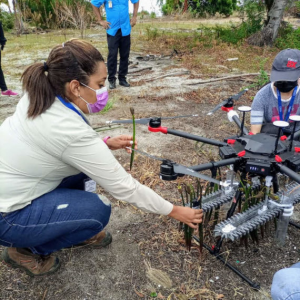
WeRobotics, a non-profit headquartered in the United States and Switzerland, collaborated with Julian Krüger and other fellows in the E4C Fellowship Program to develop a modular drone designed to plant mangrove seeds.
“For this project, we started by analyzing the current state of release system designs and interviewing key stakeholders to identify current problems faced when restoring mangrove ecosystems. Both activities allowed us to develop an initial list of key design requirements that we then used to determine design concepts. With our final design identified, we began an iterative process to test and refine our final design, a prototyping phase was conducted where mechanical components were 3D printed and actuators and sensors integrated to test the release mechanism. A final prototype was obtained and tested in a controlled environment,” Mr. Krüger and team write.
Read More: Aerial Release of Mangrove Seeds to Support Coastal Ecosystem Restoration
MAHLE’s magnet-free electric motor
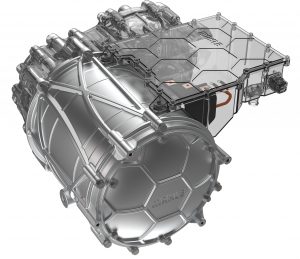
The world may be poised for an electric car boom, but limited supplies of materials to build the motors threaten to slow production. Electric motors commonly include rare earth magnets, but they are increasingly harder to source. To avoid a roadblock, car companies are looking for alternatives. The German auto parts manufacturer MAHLE announced the development of a magnet-free electric motor that may enter mass production within two years.
The new motor has an inductive, contactless power transmission allowing it to operate wear-free. It is particularly efficient at high speeds, MAHLE representatives said in a statement.
Other manufacturers are employing magnet-free technologies as well. For more on innovation in the electric motor supply chain, please see our article by Dolf Gielen has served as Director for Innovation and Technology at the International Renewable Energy Agency (IRENA).
Read More: Engineering Is Key to Easing the Supply Crunch of Critical Materials for Clean Energy
Bionicli prosthetic hand
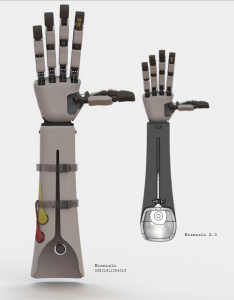
Life and Limb Ltd. (LnL), a startup based in Delhi, India, is developing the Bionicli, a functional prosthetic hand. Bionicli has six grip patterns to assist wearers with more than 15 percent of daily living activities. LnL is a spin-off from the Indian Institute of Technology Kanpur, working to mainstream the use of prostheses. As a team, LnL aims to revolutionize the field of prosthesis with cost-effective and high-quality solutions, for patient-specific fitment, with a dedicated team of professionals and appreciated by its users, the team said in a statement.
Bionicli is a winner of the Indian segment of ASME ISHOW 2021, and Life and Limb’s Founder, Nishant Agarwal, is an alumnus of the E4C Fellowship Program.
MEPA Mobile Greenhouses
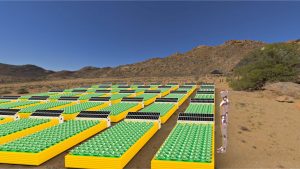
The Mobile Plant Cultivation Unit was created by the German Aerospace Center (DLR) and the goal of this unit is to eventually send it to space to provide food to astronauts and people living on mars.
In the meantime, these units are being used to provide fresh fruits and vegetables in natural disasters and to refugee camps around the globe. These use no soil, they’re reusable, and rapid, as they produce a harvest in four to six weeks.
Read More: High-Tech for Good | Eight Humanitarian Aerospace Technologies
Bloom Standard Automated Ultrasound
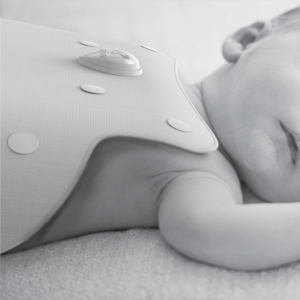
See Automated Ultrasound in E4C’s Solutions Library
The Bloom Standard Automated Ultrasound is a portable ultrasound designed to screen and diagnose infants and children for cardiac and respiratory conditions without the need for medical experts to manually screen the images. The product integrates AI-driven software that screens the images and provides results and referral guidance. This product is still in the prototyping phase, as of 2020.
This product was selected for inclusion in WHO’s 2021 Compendium of Innovative Health Technologies for Low‐Resource Settings.
Read More: E4C Partners with WHO to Advance Global Health Technology
The Sentinel: ConservationX Labs wildlife monitoring technology
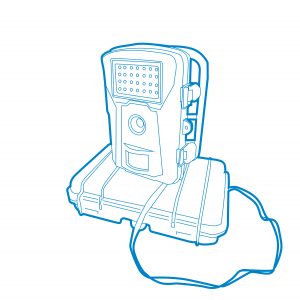 Conservation X Labs is developing the Sentinel, a hardware and software platform that retrofits existing devices used in wildlife conservation, such as trail cameras and acoustic recorders. With these devices, conservationists can have an easier time deploying advanced tools such as artificial intelligence and machine learning models.
Conservation X Labs is developing the Sentinel, a hardware and software platform that retrofits existing devices used in wildlife conservation, such as trail cameras and acoustic recorders. With these devices, conservationists can have an easier time deploying advanced tools such as artificial intelligence and machine learning models.
The technology was an award winner of the US segment of ASME ISHOW 2021.
CalWave Hydronode: A wave-powered water desalinator in NREL’s Waves2Water Contest
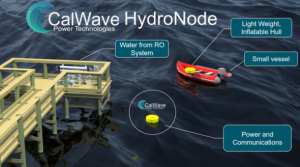
See Calwave Hydronode in E4C’s Solutions Library
The CalWave Hydronode employs a single power-take-off and surface piercing point absorber to use wave energy to desalinate seawater. The heart of the desalination system is a commercial-off-the-shelf reverse osmosis unit, keeping costs low and avoiding new and untested technology. The device was designed to be small for rapid deployment while also allowing for the potential to scale. It can provide fresh water for off-grid applications using wave energy for remote and rural communities.
The Hydronode was a finalist in the CREATE stage of the US National Renewable Energy Laboratory’s Waves2Water Prize. Five finalists in the competition are scheduled to test their technology later this year.
Read More: NREL Is Fast-Forwarding Desalination Tech Powered By Wave Energy
A Microbial Fuel Cell That Filters Water
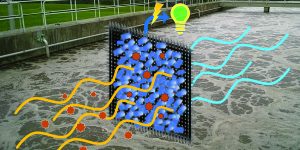 Researchers have developed a method for filtering the wastewater that powers a microbial electrochemical system, effectively adding water treatment to a power source.
Researchers have developed a method for filtering the wastewater that powers a microbial electrochemical system, effectively adding water treatment to a power source.
Dr. Zhen He, Director of the Center for Water Innovation at Washington University in St. Louis, Missouri (USA) and colleagues modified a traditional microbial fuel cell by swapping the anode and electrode with a permeable membrane of carbon cloth. The result is a microbial power generator with higher current density compared to unmodified devices, and the water that leaves the system is less turbid.
“Because of its ‘resource recovery’ function, we do envision the system as an option for developing areas that are short of resources like water and energy,” Dr. He told E4C by email.
Read More: Research Brief | A Microbial Fuel Cell That Can Filter Water
Do you know of a prototype in development that we should keep an eye on this year? Please mention it in the comments. We read each one.
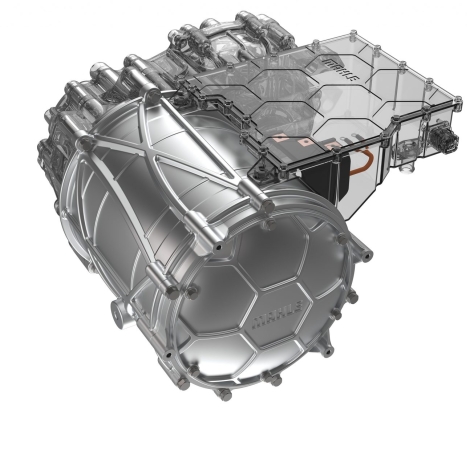

Good day well i just want to say it’s great to help people with concept,ideas,prototypes to explore in the field of technology.
I’m glad to read. Your blog content is superb. This is really a good for us. Please keep sharing.